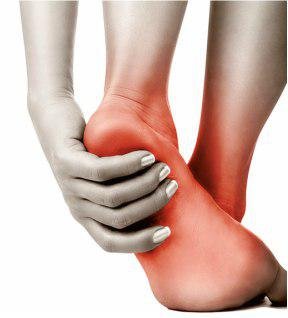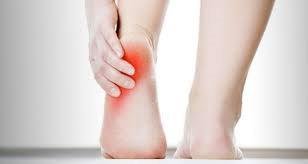Plantar Fasciitis or “Heel Pain“ : Causes & Treatment
The Problem
Plantar fasciitis is a very common condition of the heel. It is the most common diagnosed cause of heel pain. It will affect about 1 million people each year.
Plantar fasciitis is thickening of the plantar fascia, a band of tissue running underneath the sole of the foot.
The thickening can be due to recent damage or injury, or can be because of an accumulation of smaller injuries over the years.

Though plantar fasciitis can arise without an obvious cause, factors that can increase your risk of developing plantar fasciitis include:
- Plantar fasciitis is most common between the ages of 40 and 60.
- Certain types of exercise.Activities that place a lot of stress on your heel and attached tissue — such as long-distance running, ballistic jumping activities, ballet dancing and aerobic dance — can contribute to an earlier onset of plantar fasciitis.
- Foot mechanics.Being flat-footed, having a high arch or even having an abnormal pattern of walking can affect the way weight is distributed when you’re standing and put added stress on the plantar fascia.
- Excess pounds put extra stress on your plantar fascia.
- Occupations that keep you on your feet.Factory workers, teachers and others who spend most of their work hours walking or standing on hard surfaces can damage their plantar fascia.
The symptoms of plantar fasciitis include:
- Pain in the bottom of your foot, especially at the front or centre of the heel bone
- Pain that is worse when first rising in the morning (called “first-step pain”), when first standing up after any long period of sitting, or after increased levels of activity especially in non-supportive shoes.
Ignoring plantar fasciitis may result in chronic heel pain that hinders your regular activities. Changing the way, you walk to minimize plantar fasciitis pain might lead to foot, knee, hip or back problems.
Reducing inflammation in the plantar fascia ligament is an important part of treatment, but this doesn’t address the underlying damage to the ligament.
Most people who have plantar fasciitis recover with conservative treatments, including resting, icing the painful area and stretching, in several months.
- Stretching: Stretching exercises performed three to five times a day can help elongate the heel cord.
- Ice: You may be advised to apply ice packs to your heel or to use an ice block to massage the plantar fascia before going to bed each night.
- Pain relievers: Simple over-the-counter nonsteroidal anti-inflammatory drugs ( NSAIDs), such as ibuprofen, are often helpful in decreasing inflammation and pain. If you have stomach trouble from such drugs, your health care provider may prescribe an alternative.
- A night splint: A night splint is sometimes used to hold your foot at a specific angle, which prevents the plantar fascia from shortening during sleep.
- Ultrasound: Ultrasound therapy can be performed to decrease inflammation and aid healing.
- Steroid injections: Anti-inflammatory steroid injections directly into the tissue around your heel may be temporarily helpful. However, if these injections are used too many times, you may suffer other complications, such as shrinking of the fat pad of your heel, which you need for insulation. Loss of the fat pad could actually increase your pain – or could even rupture the plantar fascia in rare cases.
- Walking cast: In cases of long-term plantar fasciitis unresponsive to usual treatments, your doctor may recommend that you wear a short walking cast for about three weeks. This ensures that your foot is held in a position that allows the plantar fascia to heal in a stretched, rather than shortened, position.
- Shock wave therapy: Extracorporeal shock wave therapy which may be prescribed prior to considering surgery if your symptoms have persisted for more than six months. This treatment does not involve any actual incisions being made rather it uses a high intensity shock wave to stimulate healing of the plantar fascia.
Surgical Treatment
When more-conservative measures aren’t working after several months, your doctor might recommend:
Few people need surgery to detach the plantar fascia from the heel bone. It’s generally an option only when the pain is severe and all else fails.
Plantar fasciotomy may be performed using open, endoscopic or radiofrequency lessoning techniques. Overall, the success rate of surgical release is 70 to 90 percent in patients with plantar fasciitis.



